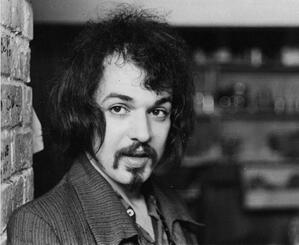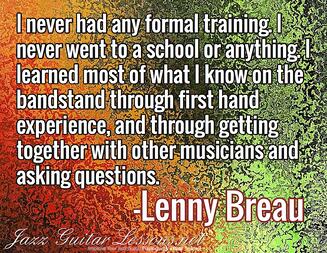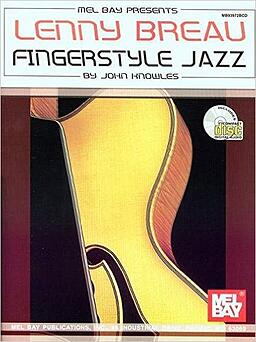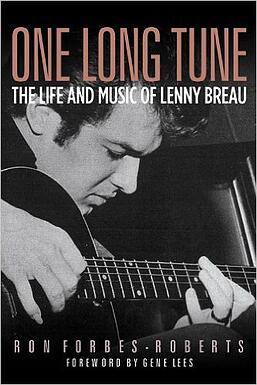Lenny Breau Untold
Jul 14, 2016Guest Post by Steve Raegele
 Perhaps one of the greatest jazz guitarists ever, Lenny Breau was anything but a purist and drew on a huge variety of influences including flamenco, classical music, Indian ragas, and of course, his true pedigree as the son of a pair of traveling Country musicians.
Perhaps one of the greatest jazz guitarists ever, Lenny Breau was anything but a purist and drew on a huge variety of influences including flamenco, classical music, Indian ragas, and of course, his true pedigree as the son of a pair of traveling Country musicians.
Breau practiced obsessively from a very early age and dropped out of grade school to go on the road with the family band. His singular sound came out of similarly singular focus on music and a voracious appetite for different forms of guitar styles.
This obsessiveness rendered him largely unable to cope with the more mundane aspects of everyday life and led to his lifelong addiction to drugs. There is clearly a downside to doing literally nothing but play guitar every day to the exclusion of all other things, but it definitely made him one of the most incredible guitarists on the planet.
What can we learn from Lenny Breau that can take our own playing somewhere new? There are almost an embarrassment of riches in his work, so we need only reach in to his bag of tricks to find any number of mind altering ideas.
Be Eclectic
If you are a straight ahead jazz guitarist and listen only to music jazz from 1945 to 1963, you might want to take a cue from Lenny if you want to get out of a rut. His first exposure to music was Country music and you can hear a the strong Merle Travis influence on his playing. If you’re not familiar with Merle Travis, go to the store or the internet and check it out. Between Travis and Chet Atkins (a father figure to Lenny) Lenny found a model for his approach to all other musics. Travis picking is a beautiful style and Lenny was a master of it.
Taking a cue from Atkins, Lenny played with a thumb pick and expanded on Chet’s distinctive cascading harp harmonics technique. Lenny would often play country tunes (and sing!) in his solo sets and with a trio (like the wonderful That’s All, from the live The Velvet Touch Of Lenny Breau) often starting the tunes in an authentic style before jumping off into jazzy and impressionistic excursions. In fact, TVTOLB is the perfect intro to just how much a young Lenny Breau had synthesized so many styles into his own vision of where a jazz guitar trio could go. You can really hear that Lenny didn’t believe in keeping genres separate and the record was obviously an effort to introduce this young wizard to the world and showcase his incredible versatility.
I have spoken to many jazz players who don’t get Lenny precisely because of his lack of stylistic focus. And it’s true that Lenny could be capricious - veering wildly from meaty jazz lines and Bill Evans inspired voice leading into flamenco flourishes and Tarrega-inspired tremolando melodies, followed by Raga-infused drones and explorations. (All in the space of two minutes!) But it is precisely this aspect of his playing that is so fascinating. He channeled all of this into some truly idiosyncratic music that was not jazz, not country, not Flamenco, but just the world of Lenny Breau. Which is perhaps why he appeals so much to guitarists in general rather than jazz guitarists specifically.
Everyone who plays guitar can learn something from him and we can relate to what he’s doing because we’ve all sat down and said “I’m going to learn this classical piece.” Or “I’m going to finally get a country tune under my belt.” Except Lenny didn’t just learn a few show pieces. He mastered entire styles, then reincorporated them into his own vision.
Also worth checking out is Boy Wonder which features early recordings of Lenny playing in a heavily Merle Travis influenced style throughout. So take a cue from Lenny and spend some time learning an aspect of a guitar style that involves new techniques or vocabulary. Even if it’s not clear how you will use this style immediately, given time to assimilate and simmer in your mind, the usefulness of this will become obvious in time.
Remember that the guitar is an instrument that transcends genres and it’s this incredible versatility that makes the guitar so different from many instruments that are relegated (fairly or not) to single styles of music.

Be Your Own Rhythm Section
Lenny’s ability to imply harmony with two low register notes while playing melody on the upper strings was unprecedented. He really did create the impression of two guitarists playing together, at times. A video of Lenny playing Georgia On My Mind on CBC Television in 1961 is evidence of Lenny’s bona fides as a jazz guitarist and of his incredible harmonic sophistication and depth and showcases his Bill Evans influenced approach to harmony and arrangement. Check it out if you haven’t already and steal as many passages from this recording as possible.
To truly get into this approach you will need to abandon the pick, but right hand finger technique is definitely a good thing to add to your bag of tricks even if it’s not something you see yourself adopting full-time. It will give you an increased awareness of the arranging possibilities on the guitar and illuminate aspects of harmonic efficiency that may not have occurred to you playing with a plectrum. You could even experiment with a thumb pick to really get into his vibe. On a related note: One cool thing that Lenny did was to often play his single note lines pipm. It gives a kind of weight to lines that imimim … can’t really match and gets closer to the heavy steadiness of plectrum alternate strokes.
Practice More!
This kind of goes without saying. But the amount of time Lenny spent with the guitar probably can’t be comprehended by mere mortals. He basically didn’t do anything but play the guitar. Stories abound of his incompetence in regular life and struggles to do things like go to the store, pay the rent, hammer a nail or feed himself. This is definitely not something to emulate. But it definitely shows what comes of a dedication to the instrument. Could you be practicing more? Of course you could. Can you increase your practice time without falling into a life of addiction and personal chaos? I hope so. Split the difference between Lenny’s obsessiveness and your own personal need for improvement and you may find in that space a happy medium that allows you to come closer to your goals as a musician.

In our internet age, it seems harder than ever to find the solitude and space for introspection that was afforded to many of the greats that came up in the pre-internet age. Remember that you need to make that space for yourself and find a way to immerse yourself in music. Your heroes all practiced A LOT. And it was in many ways easier to do that because, hey, what else was there to do? ;) Try to imagine a time of immense boredom and idle time that people filled with learning how to play the guitar, hit a tennis forehand, learn a kick flip ollie on a skateboard, write novels and become chess grandmasters. This time was not that long ago. Channel that. Music is struggle, pain and hardship! ;) Don’t forget that.
Here are some good read:
The late Lenny Breau was admired throughout the world for his complex fingerstyle jazz stylings. The first part of this text/CD contains Lenny's guitar workshop dealing with Building the Blues; Three Against Two, and Harmonics at Work. Section 2 presents three great Lenny Breau solos (5 O'Clock Bells; Little Blues, and Freight Train). Written in notation and tablature. Contains Lenny's master class on fingerstyle jazz guitar.
Chet Atkins called Lenny Breau (1941–1984) “the greatest guitarist who ever walked the face of the earth.” Breau began playing the instrument at age seven, and went on to master many styles, especially jazz. Between 1968 and 1983 he made a series of recordings that are among the most influential guitar albums of the century.
Breau’s astonishing virtuosity influenced countless performers, but unfortunately it came at the expense of his personal relationships. Despite Breau’s fascinating life story and his musical importance, no full-length biography has been published until now. Forbes-Roberts has interviewed more than 175 people and closely analyzed Breau’s recordings to reveal an enormously gifted man and the inner workings of his music.
Click Here for more Lenny Breau contents ...
Guest Post by Steve Raegele
Steve Raegele is a guitarist based in Montreal. He’s played many styles of music (except Bluegrass) in dozens of cities across 4 continents. He enjoys playing jazz, rock, R&B and improvising creative music. As a sideman Steve has played the music of Thom Gossage, Isaiah Ceccarelli, Nicole Lizée, Christine Jensen, and many others. His trio record, Last Century, is available from Songlines.











